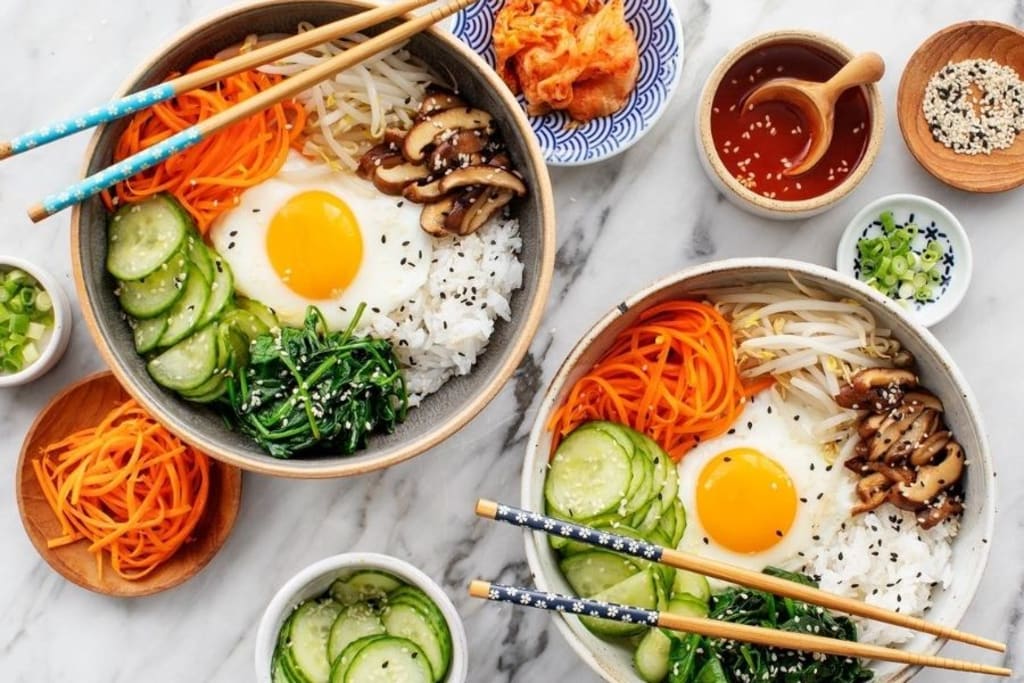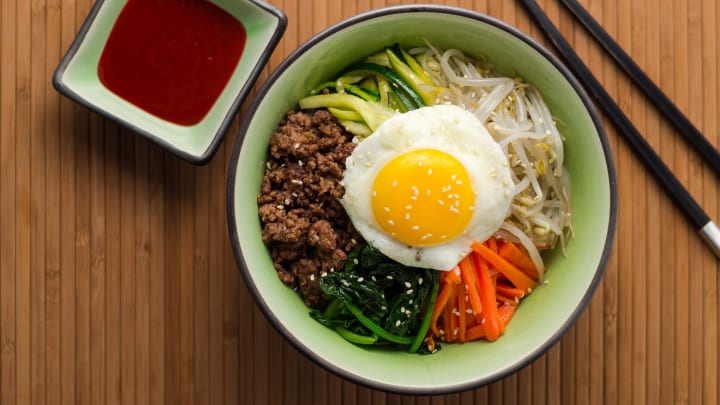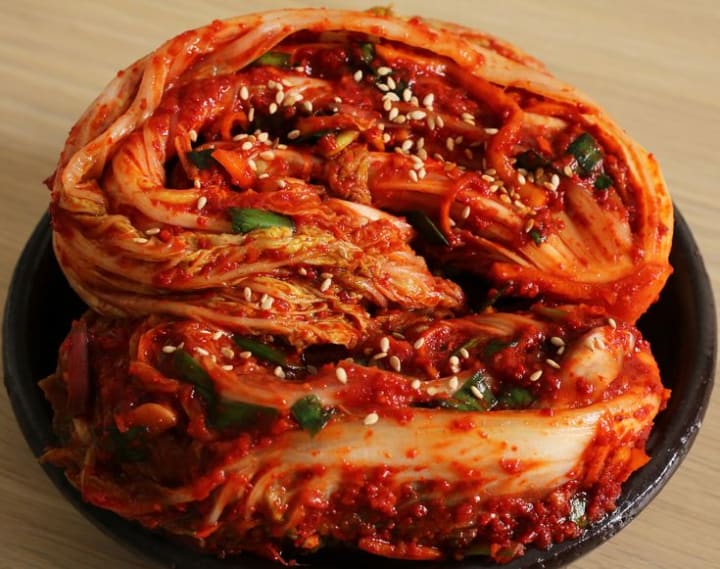Exploring the Delights of Korean Cuisine
Two Must-Try Dishes with Recipes

Korean cuisine is renowned for its rich flavors, vibrant colors, and unique blend of ingredients. From spicy and savory to fermented and tangy, Korean dishes offer a delightful culinary experience. In this blog post, we will explore two popular Korean dishes that will surely tantalize your taste buds. So, let's dive into the world of Korean gastronomy and learn how to prepare these mouthwatering delicacies in your own kitchen!
Bibimbap:
Bibimbap, which translates to "mixed rice," is a classic Korean dish that showcases a harmonious combination of flavors and textures. This hearty and visually appealing dish is a culinary masterpiece.

Here's how you can prepare Bibimbap at home:
Ingredients:
- 2 cups cooked short grain rice
- 1 cup assorted vegetables (carrots, spinach, bean sprouts, mushrooms, zucchini, etc.)
- 200g thinly sliced beef or chicken (optional)
- 4 eggs
- 4 tablespoons gochujang (Korean chili paste)
- 2 tablespoons soy sauce
- 1 tablespoon sesame oil
- 1 tablespoon vegetable oil
- Salt to taste
- Sesame seeds for garnish
Instructions:
- Prepare the vegetables: Julienne the carrots, blanch the spinach, sauté the mushrooms, blanch the bean sprouts, and stir-fry the zucchini. Season each vegetable with a pinch of salt and sesame oil.
- Cook the meat (optional): Heat vegetable oil in a skillet and stir-fry the beef or chicken until cooked through. Season with soy sauce and sesame oil.
- Fry the eggs: Heat a little oil in a separate pan and fry the eggs sunny-side up or over-easy.
- Assemble the Bibimbap: In a bowl, add a serving of cooked rice as the base. Arrange the assorted vegetables and meat (if using) around the rice. Place the fried egg on top. Drizzle with gochujang sauce and sprinkle with sesame seeds.
- Mix and enjoy: Before eating, vigorously mix all the ingredients together to distribute the flavors evenly. Take pleasure in the medley of flavors and textures that Bibimbap offers.
Kimchi:
Kimchi is a staple in Korean cuisine and is a traditional fermented side dish made with vegetables, typically cabbage. It is not only delicious but also packed with probiotics and vitamins.

Let's learn how to make Kimchi:
Ingredients:
- 1 Napa cabbage
- 1 daikon radish
- 4-5 green onions
- 3 cloves garlic, minced.
- 1 thumb-sized piece of ginger, grated.
- 2 tablespoons Korean chili powder (gochugaru)
- 2 tablespoons fish sauce
- 1 tablespoon soy sauce
- 1 tablespoon sugar
- 1 tablespoon salt
Instructions:
- Prepare the vegetables: Cut the cabbage into bite-sized pieces. Slice the daikon radish into matchsticks. Cut the green onions into 2-inch lengths.
- Salt the vegetables: In a large bowl, sprinkle salt over the cabbage and daikon radish. Mix well and let it sit for about 2 hours. Rinse the salted vegetables thoroughly and drain excess water.
- Make the kimchi paste: In a separate bowl, combine minced garlic, grated ginger, Korean chili powder, fish sauce, soy sauce, and sugar. Mix well until a paste-like consistency is formed.
- Mix everything together: In a large mixing bowl, combine the rinsed vegetables, kimchi paste, and green onions. Use gloves to protect your hands and mix everything thoroughly, ensuring all vegetables are well coated with the paste.
- Fermentation: Transfer the mixture into a clean, airtight jar or container. Press it down firmly to remove any air bubbles. Seal the jar and let it ferment at room temperature for 2-3 days. Then, store it in the refrigerator for further fermentation and flavor development.
Korean cuisine offers a wide array of flavors and textures that are both delicious and unique. Bibimbap, with its colorful medley of vegetables and bold flavors, and Kimchi, with its tangy and spicy fermented goodness, are two dishes that epitomize the essence of Korean gastronomy. By following the provided recipes, you can recreate these authentic Korean dishes in the comfort of your own kitchen. So, gather the ingredients, embrace the flavors, and embark on a delightful culinary adventure with Korean cuisine!





Comments
Karthiga Elangovan is not accepting comments at the moment
Want to show your support? Send them a one-off tip.